Identify

When stink bugs are crushed or sense a danger, they emit an odor that is fittingly named. This insect is a threat to farms and gardens because it feeds on plants, fruits, and crops in more than 200 different kinds.
Certain fruits and crops may be unfit for sale if they have been damaged by stink bugs. This pest knows when winter is approaching and seeks out comfort, particularly heat. When people seek warmth indoors from the cold, this can be a serious issue. You can prevent or eliminate a swarm of these insects by understanding how they live and thrive throughout the autumn and winter.
Key Traits
- Due to the shieldlike form of their bodies, stink bugs are also known as shield bugs.
- They have two straight antennae and walk on six legs.
- Adult stink bugs do fly, but their wings remain folded together making it easy to overlook.
Common Species
Brown Marmorated Stink Bug

Thanks to its arrival from Asia in the 1990s, this is the most common type in the United States. Stink bugs have spread to 41 states and both coasts since first being spotted in the Northeast. They are currently predominantly located in the eastern United States. Washington, D.C. residents The stink bug has been the most problematic insect in a given area.
How To Identify:
- Roughly 3/4 inch in length
- They’re nearly as broad and long as they are wide.
- Younger stink bugs have a combination red/black color, while adults blend in against tree bark.
- It does not cause damage or reproduce inside buildings.
- Feeding on fruits like apples, peaches, and apricots, as well as crops like beans, corn, and tomatoes has a significant agricultural impact.
Southern Green Stink Bug
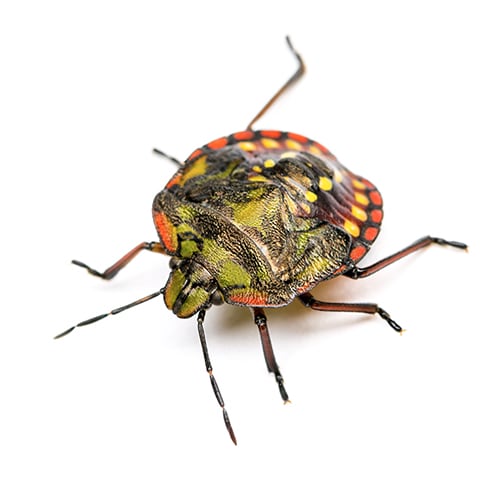
Its dull green color makes this type stand out more than the brown marmorated stink bug.
How To Identify:
- 1/2 inch to 3/4 inch in length
- Hides in trees and leaf litter
- From Virginia to Florida and west to Texas, this plant is mostly found in the southeastern United States.
- Peas, cotton, and soybeans are among the crops attacked.
- Known to live roughly 60-70 days
One Spotted Stink Bug
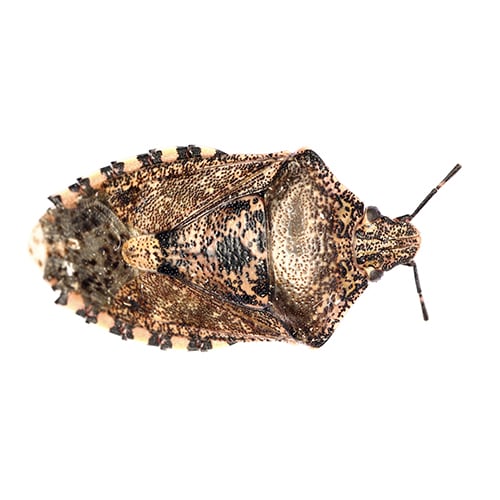
In the eastern states and the Pacific Northwest, a brown marmorated stink bug lookalike may be found.
How To Identify:
- 7/16 inch
- Common throughout the U.S.
- Agricultural threat to corn
Dusky Stink Bug

Dusky stink bugs are less common than brown marmorated ones, and they may be found across North America.
How To Identify:
- It is roughly a half-inch long, or even less.
- In terms of color, it is more uniformly brown.
- In the eastern United States, it is seen in fruit-growing regions.
- Apples and peaches are the favorite tree fruits, but they attack all of them.
Spined Soldier Bug
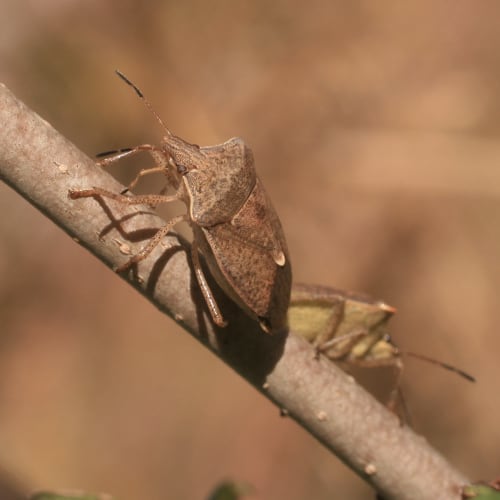
This species may be introduced into farming areas as a beneficial predator.
How To Identify:
- ½ inch
- Mottled brown color
- Because it preys on other invasive pests, it may not need to be treated as a threat.
Inspect

1. It’s About Where and When

In the United States, stink bugs are widespread. They are more of a annoyance than a genuine worry. They seek out warm climates to flee the harsh winter months as the seasons change. As a result, they naturally seek out tiny areas to guide them into warmer indoor temperatures. At home and in buildings, there are several easy access points:
- Siding and screens have holes in them.
- Frames for doors and windows
- Sun-facing walls
- Vents and eaves are common in homes.
- Air conditioners for windows are called window air conditioners.
- Any open area big enough to walk through
Stink bugs will seek out seams in walls, attics, folds in drapes, and other areas that get little or no attention or movement once they have entered a residence. They become more active when it gets warmer, and they are more likely to fly around when the weather becomes nicer. If you dwell near a farm or orchard, or if you have a garden, your home may be at increased risk since stink bugs are agricultural pests.
2. Can Stink Bugs Do Structural Damage?
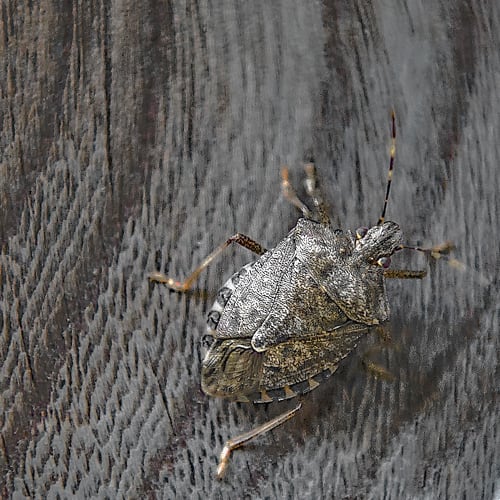
These pests, unlike termites, pose no danger to your home’s structure. The primary concern is the odor that stink bugs emit when crushed, which they do outside and during mating. Stink bugs have acquired in huge enough numbers to create an odor if you detect a scent in your house that resembles coriander. This is a sure indication of infestation. Stink bugs have brown, green, or gray bodies, making them difficult to see at first glance. However, since they can gather in the open on a bright wall, they’ll be more readily seen. Expect a crowd of scores or even hundreds when you find them in those locations.
3. Check Trees, Plants, and Garden Areas
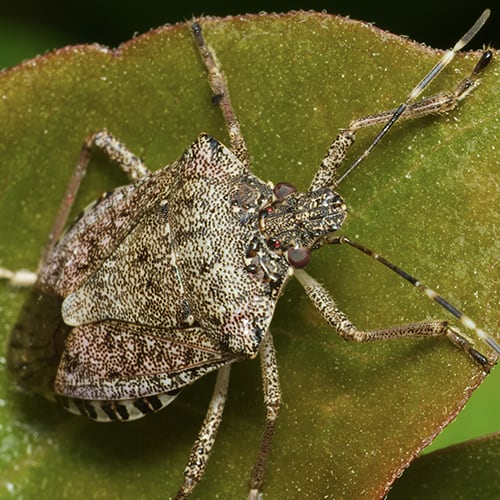
As adult stink bugs emerge from their overwinter sites, these are the feeding spots. They lay their eggs beneath the underside of leaves after chewing on leaves and stems to suck out juice. Young stink bugs (nymphs) seek food nearby when the eggs hatch, typically in yards and gardens. Stink bugs are a growing concern to crops and agriculture, which is one of the most common reasons they are detected.
How Changes in the Seasons Affect Stink Bugs
From active feeding to sheltering for the winter inside man-made buildings, September is typically when stink bug behavior changes. They will not feed while inside structures or homes. Sink bugs may become active again in your home after January, owing to the heating system. They’re responding to temperature, which is why they may flutter inside your home’s rooms. The stench bugs begin their next breeding cycle in the spring, and most likely in May, when they investigate plants and crops for food and places to lay eggs.
Pro Tip
Caulking your home’s numerous openings and small spaces not only prevents stink bugs from entering but also keeps your climate in. This inexpensive option not only fixes problems but also improves aesthetics.
Prevent

The stinking bug’s primary defense against predators is to emit a distinct odor, which it does. The pungent odor is created by special organs in its belly, and if it is taken in high enough concentrations, it can be deadly.
A stink bug infestation is a particularly unpleasant challenge to deal with because of this odor.
Stink bugs are agricultural pests that can ruin crops in addition to their smell. These insects will adapt their eating habits to the species of plant available to them, feeding on a variety of plants. For many years, they have posed a serious enough danger to warrant official government attention. They can do a lot of damage to plants quickly because they attack them in swarms.
While the insect has outpaced its natural predators in North America, it does have them. Pesticides might actually do more harm than good if they are used on the scale required to control them, because their numbers are already so high. The best way to control the spread of stink bugs is to prevent them from becoming a problem in the first place.
DIY Prevention Methods
There are several simple solutions that will keep your house and property safe if you know that your land is likely to be assaulted due to the season, the crops you have on your land, or a nearby infestation. Even better, these measures may help keep pests at bay on your property and at home.
1. Cultivate Your Land

The vegetation surrounding your house and the degree of infestation your property has suffered may determine your stink bug management technique. Keep in mind that uncultivated places are where stink bug infestations are most common. These insects prefer to settle on ground covers in uncultivated land where irrigation is scarce. So, in a smelly, dense location, your first step is to cultivate the region surrounding your property as much as feasible. Whether you’re already combating an infestation or preventing one from developing.
2. Care for Your Crops

If you cultivate crops that stink bugs favor, such as corn, berries, alfalfa, or wheat, you may need to take additional steps. Weed prevention is important for gardens and orchards, particularly if you have them on your land. Attempting to mow the weeds where stink bugs reside is one of the most common errors you can make. The bugs will simply migrate to neighboring trees if this does not work.
3. Seal Entryways

The damaged linings of doors and windows are favorite places for stink bugs to build nests. Ensuring that all of your doors and windows are properly sealed is one of the easiest ways to get rid of them throughout the winter.
- Any broken window screens should be fixed.
- Crawl spaces and attics should be ventilated.
- Doors and windows should be weatherstripped, and caulk should be applied.
- Make sure you’ve entered everything into your crawlspace.
- Pay close attention to your fireplace and any other entrances that you wouldn’t normally notice.
4. Inspect Your Property

Note any cracks that might be used by stink bugs as an open door to your house, and check it at least once every three months. If you identify any fresh cracks or crevices, use the previous sealing procedures we discussed. Both caulk and expandable foam are cost-effective materials that make it simple to seal in tight spaces, even those difficult to reach.
5. Vacuum Often

A basic vacuum cleaner can be used to physically remove stink bugs from walls and windows. One of the best ways to eliminate stink bug smell and prevent infestations is this method. As a last resort, use only squash stink bugs since their odor will release if you use them. Remember that the odor will linger for some time if they have already released their noxious chemical.
6. Wash Your Plants
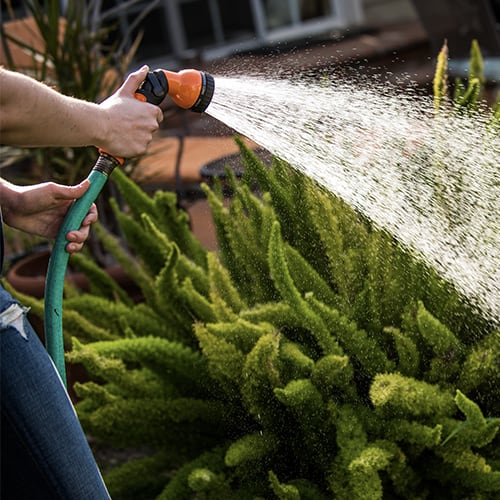
Spray stink bugs on tomato plants and apple trees with water the first time you see them. The insects will be forced off the plants as a result of this. The water can be combined with a little mild dish soap, and the stink bugs’ exoskeletons will be broken down and dehydrated in this solution. Water and vegetable oil, lavender oil, or olive oil can be combined for a more long-term solution. Apply this treatment with a garden sprayer or a regular spray bottle, and it will serve as a deterrent.
7. Stink Bug Deterrent Spray

There are several options for purchase that are more effective than a DIY solution if you’d rather buy a stink bug repellent to protect your crops.

8. Plant Distraction Crops

Give stink bugs a place to congregate other than your cultivated crops. You can plant sunflowers, mustard, millet, garlic, or lavender as far away from your other crops and house as possible because stink bugs are attracted to yellow. This will also bring in additional stink bug predators, who can assist with their removal.
9. Control Your Weeds
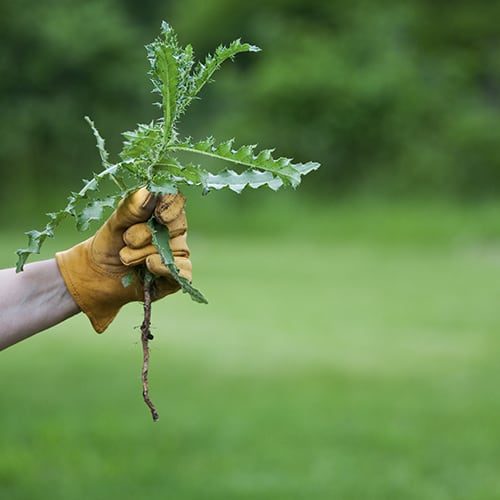
Controlling your stink bug population will simply involve taking care of your garden. Weeding will naturally reduce your stink bug problem without having to use pesticides since these bugs adore to move into your territory on weeds that gardeners wouldn’t want.
Treat

DIY Treatment Methods
For stink bug control, the following treatments have been shown to be effective. You may require professional assistance if you aren’t sure about how to use the pesticides or traps recommended.
1. Fenpropathrin and Clothianidin
- Both pesticides should be applied liberally throughout the Peak Bud and Bloom Seasons, drenching the ground with a spray to cover the entire crop at once. When applying these treatments, professionals recommend using 100 to 300 gallons of water per acre.
- Fenpropathrin should be applied as soon as any stink bug activity is observed, even if it is not noted at the time. In the case of greater pest concentrations, higher pesticide concentrations should be used. Cropthianidin should not be applied directly or allowed to drift onto any other crops. Bees are poisoned by both pesticides.
- Fenpropathrin or Clothianidin, or any other preharvest months, may be used throughout the Preharvest Period. Apply these insecticides to trees during these times of the year. Use higher concentrations for a more severe stink bug invasion when the first stink bug activity is detected. Make sure that you don’t apply the pesticide to nearby weeds or crops in order to protect bees.
2. Trapping and Baiting
Homemade stink bug traps are more successful than professional ones, according to a previous Virginia Tech study. The size and intensity of your stinkbug problem might impact this, though.
DIY Soap Trap
- To direct the insects to a precise area where you’re setting the trap, use a desk lamp with white, black, or blue light. These kinds of light, as well as certain pheromones, attract stink bugs naturally.
- Underneath the desk lamp, place a pan of soapy water. After around 12 hours, the stink bugs should start to arrive in the pan. The bugs will be killed by the soapy water.
DIY Towel Trap
- Soak a cloth in water and wring it out thoroughly.
- In an open location, preferably far from your home, hand the towel.
- The stink bugs will gather on the towel to absorb water, and you’ll have a nice collection of them the next day.Kill the stink bugs by dunking the entire towel in a bucket of soapy water.
- Before using the towel for anything else, wash it thoroughly.
Wherever stink bugs are likely to congregate, place traps. Throughout the summer months, these insects prefer to build nests outdoors, and inside during the winter months. DIY traps, such as these, are pesticide-free and have the benefit of being so. They are, however, only effective for minor issues. Electricity, sticky surfaces, and smells are used in several stink bug traps for various settings.
Stink bugs are also sluggish moving creatures, making it simple to catch them on your own without the need of any bait or special equipment. You should be able to simply guide a single stink bug into an empty container, which you can then dispose of outside or into a toilet if you discover one inside your home. Remember not to squash them when you’re inside because you’ll be even more irritated by the odor!
3. Chemical Perimeter Spray

You’ll want to take critical steps to keep the stink bugs out of your house if you’ve already got a stink bug problem in and around your property. It’s one thing to have the insects outside, where their scents won’t be as noticeable, but if they’re cooped up inside your home with you, the smell may start to have an impact on your health.
Pest control experts often perform a perimeter spray using liquid or powdered pesticides. These insecticides, on the other hand, are widely accessible and may be administered at home for a lower cost.
You should treat the edges of your house every 30 days throughout the seasons that stink bugs thrive, especially during the summer and fall, using an insecticide sprayer. Around eaves and soffits, as well as any crack or crevice that you notice in your foundation or roof, pay particular attention to windows and doors. You’ll need to pay close attention or even use professional pest control because stink bugs have tiny and difficult-to-see entry points.
4. Natural Perimeter Barriers

Squashing Stink Bugs Outside
Squashing any stink bugs you find around your house perimeter is another natural method you can employ. Other stink bugs will be repelled by the odor they emit. This approach isn’t guaranteed to work every time you see a stink bug, but it can be a good idea to do whenever you do. You can’t count on being able to squash one every time.
Since you can easily track their carcass inside and make a mess in your house, we don’t recommend stomping on them with your foot. Instead, try something like a rolled-up magazine or plastic fly swatter. These aretwo items that can be easily rinsed off or discarded. It’s worth noting that stink bug squeezing should be done outside, since the stench will be released, rather than indoors, where it will be trapped.
Neem Oil Spray
Stink bugs are averse to neem oil, which, like lavender oil and other essential oils, has a distinctive odor. By creating a neem oil spray and applying it around the perimeter of the house, you can give them a taste of their own medicine. This will scare off the bugs, preventing them from entering your home.

Since it doesn’t contain any pesticides that may create fumes or be hazardous to children and animals, this formula is ideal for indoor management.
It’s also important to monitor for dead or squished bugs if you have stink bugs inside your home. Squashed insect odors may help to repel other kinds of insects, but they may also entice new kinds of invaders and cause a new type of infestation that you do not want.
When To Call a Prefesional

Despite the numerous do-it-yourself remedies for stink bug, the sheer quantity of them may be too much to handle at times. If you continue to find the same number of flaws after treating and retesting for a few months, a larger-scale approach may be required.
Because of the damage stink bugs can do and the havoc they may wreak if they invade your home and infect you with their odor, it’s particularly vital to contact a professional right away. All of the places where the stink bugs are gathering or sneaking in can easily be discovered by a pest management specialist, who will utilize professional-grade pesticides and repellents to get rid of them faster.